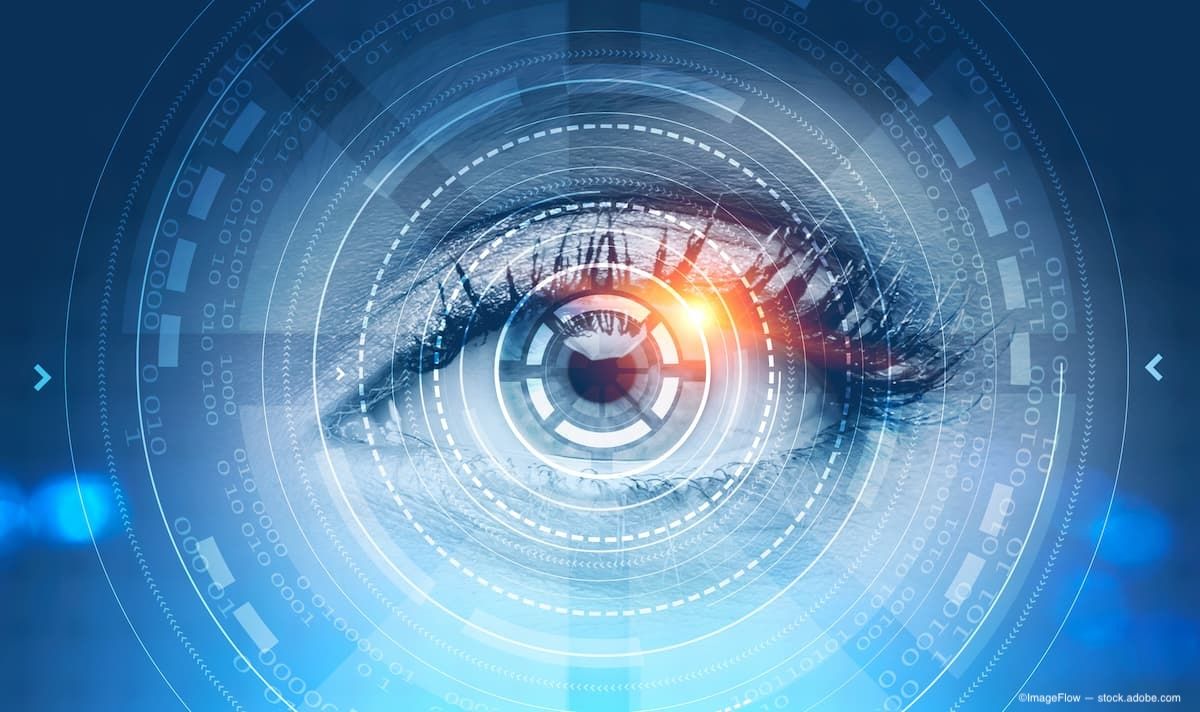Article
HHV-1, -2, -3: Precise medical management of herpetic nodular anterior scleritis
Author(s):

By Mark P. Breazzano, MD, Alia K. Durrani, MD, and Stephen J. Kim, MD; Special to Ophthalmology Times
An 80-year-old white man was referred to the uveitis clinic at the Vanderbilt Eye Institute, Nashville, TN, by an outside retina specialist for irritation, soreness, and floaters of the left eye for 3 months. During this time, he had “flared twice” while attempting to taper off topical difluprednate drops for presumed intermediate uveitis.
Secondary ocular hypertension of the treated eye was being managed with twice-daily topical dorzolamide. Ophthalmic history was negative for surgeries or conditions except cataracts.
He reported multiple tick bites about 8 to 10 years ago, and denied history of cold sores. Review of systems was positive for left-sided headache and increase in left-sided ear drainage, but otherwise negative.
Diagnosed with Lyme disease, this patient had been treated with tetracycline for 1 month prior to referral. Past medical history was otherwise signiï¬Âcant for coronary artery disease status post-stenting 2 months prior, hypertension, prostate cancer status post-radical prostatectomy 6 years previously, a vertebral fusion at levels L3 – L4, and a heel spur excision. There were no known drug allergies.
Rheumatologic conditions, such as systemic lupus erythematous, rheumatoid arthritis, or osteoarthritis, were denied.
He was a retired computer programmer born and permanently residing in western Tennessee, though he did travel on occasion to Central America, Europe, and Washington State, but not the Northeastern states.

Examination
The patient tested 20/60 best-corrected Snellen acuity and IOP was 19 mm Hg in the left eye. The pupil was ï¬Âxed and non-reactive (Figure 1), but no relative afferent pupillary defect by reverse was present.

External lid examination was normal, while the anterior segment demonstrated nodular hyperemia and edema of the superior sclera (Figure 2), as well as posterior synechiae with scattered transillumination iris defects (Figure 3) and +3 nuclear sclerotic cataract.
No cellular reaction was detected in the anterior chamber. Superior vitreous debris was seen near the equator, while remaining posterior examination was normal.
The right eye was normal except with +1 nuclear sclerotic cataract.
Previous laboratory results showed positive Lyme disease serology, while negative qualitative syphilis (rapid plasma reagin), anti-nuclear antibody, toxoplasma, Rocky Mountain spotted fever, R. typhi IgM and IgG, B. henselae IgG and IgG, and B. quintana IgM and IgG titers. Outside testing also showed a normal angiotensin converting enzyme level of 27 units/L (Ref: 9 – 67), complete blood count, and chest radiography.

Discussion and diagnosis
Even though this patient presented with a history of floaters, previous tick bites, positive Lyme disease serology, and vitreous debris all consistent with intermediate uveitis, the presence of eye soreness with anterior segment ï¬Ândings should warrant early consideration of alternative diagnoses.
Signs of scleral inflammation in the superior quadrant can be easily missed, and in these authors’ experience, are best appreciated by having the patient infraduct while the clinician lifts the upper eyelid and uses a Finnoff muscle light for examination. At this typically bright level of illumination, affected sclera is highlighted against a normal tissue background.
While isolated intermediate uveitis typically presents with floaters in the absence of pain or redness, here the vitreous debris was likely a secondary reaction to the nodular anterior scleritis.
By the time this patient presented to our clinic, structural damage was already present with iris thinning and posterior synechiae, probably as sequellae from anterior uveitis, found at least in 30% of cases with scleritis.1
Topical difluprednate probably halted any anterior chamber reaction without addressing the underlying cause. The relatively higher potency (measured drug effect) of difluprednate compared with other steroid drops is more dangerous for patients already at high risk of glaucoma by inducing a steroid response via sustained elevation in IOP.
Fortunately, this consequence was easily managed by the hypotensive agent dorzolamide alone here, which may not have been necessary had a lower potency steroid been used initially instead.
However, for others, such as half of the general pediatric population, there is a known greater risk of sustained ocular hypertension with topical difluprednate, and striking implications for blindness from glaucoma later in life.2
In this case, it is easy to be led astray by positive Lyme serology. Though Lyme disease is an important cause of scleritis, the history of treatment failure and low pretest probability of truly having the disease (as Tennessee has a low incidence rate and the patient had not traveled to endemic areas) in the setting of persistent inflammation, and low inherent test speciï¬Âcity,3 all warranted consideration of other causes of scleritis.
It is important to consider focused laboratory testing with a thoughtful differential diagnosis in mind, rather than ordering a large battery of tests.

The human herpes viruses (HHV) are known to cause intraocular inflammation with characteristic iris thinning, typically by herpes simplex viruses 1 (HSV-1 or HHV-1) and 2 (HSV-2 or HHV-2), as well as varicella zoster virus (VZV or HHV-3) and cytomegalovirus (CMV or HHV-5), and as discovered by recent technologic advances, are thought to underlie many cases of inflammatory iris-involving conditions, such as Fuch’s heterochromic iridocyclitis.4
Prominent iris thinning in this case prompted obtaining herpetic serology that was not part of initial testing.
Given evidence of chronicity and structural damage, aqueous biopsy by anterior chamber paracentesis in the ofï¬Âce was also elected with polymerase chain reaction (PCR) testing aimed at direct viral detection of HHV. Results demonstrated positive HHV-1 and HHV-2 serology tests, but negative PCR for DNA for these two viruses. PCR for HHV-5 DNA was also negative.
Meanwhile, HHV-3 DNA was detected by PCR, establishing the diagnosis of nodular anterior scleritis caused directly by varicella zoster virus. This ï¬Ânding highlights that even with focused serologic testing (in this case for two other herpes viruses), there can be misleading results, and that direct molecular evidence (when feasible) is preferable to indirect immunologic testing.5 Furthermore, HHV have been reported to cause as many as 7% of scleritis cases.6
Oral treatment with 1 gram of valacyclovir three times daily was then initiated. At 1 month follow-up, symptoms and scleral inflammation had improved dramatically (Figure 4).
Conclusion
This case demonstrates many important points about the presentation, evaluation, and management of patients with nodular anterior scleritis. Examination of the superior sclera with a muscle light and lid elevation can help with proper diagnosis. The presence of transillumination defects of the iris in the setting of ocular inflammation should raise clinical suspicion of a herpetic cause.
Utility of serologic testing can be limiting or even misleading, and in the right clinical context (such as previously failed targeted treatment), may warrant a more precise diagnostic approach (such as aqueous biopsy with PCR testing).
Careful discretion of steroid drops should be considered with regard to risk of IOP elevation.
Finally, this case also highlights that misdiagnosis may perpetuate disease by promoting HHV replication in the setting of immunosuppression without concomitant anti-herpetic viral suppression.
References
Berchicii L, Miserocchi E, Di Nicola M, La Spina C, Bandello F, Modorati G. Clinical features of patients with episcleritis and scleritis in an Italian tertiary care center. Eur J Ophthalmol. 2014;24:293-298.
Slabaugh MA, Herlihy E, Ongchin S, van Gelder RN. Efï¬Âcacy and potential complications of difluprednate use for pediatric uveitis. Am J Ophthalmol. 2012;153:932-938.
Jaaskelainen AJ, Viitala SM, Kurkela S, Hepojoki S, Sillanpaa H, Kallio-Kokko H, Bergstrom T,Suni J, Narvanen A, Vapalahti, Vaheri A. Performance of a multiplexed serological microarray for the detection of antibodies against central nervous system pathogens. J Microbiol Methods. 2014;100:27-31.
Barequet IS, Li Q, Wang Y, O’Brien TP, Hooks JJ, Stark WJ. Herpes simplex virus DNA identiï¬Âcation from aqueous fluid in Fuchs heterochromic iridocyclitis. Am J Ophthalmol. 2000;129:672-673.
Loureiro M, Rothwell R, Fonseca S. Nodular scleritis associated with herpes zoster virus: an infectious and immune-mediated process. Case Rep Ophthalmol Med. 2016;2016:8519394 doi: 10.1155/2016/8519394. Epub 2016 May 19.
Gonzalez-Gonzalez LA, Molina-Prat N, Doctor P, Tauber J, Sainz de la Maza MT, Foster CS. Clinical features and presentation of infectious scleritis from herpes viruses: a report of 35 cases. Ophthalmology. 2012;119:1460-1464.
Newsletter
Don’t miss out—get Ophthalmology Times updates on the latest clinical advancements and expert interviews, straight to your inbox.




